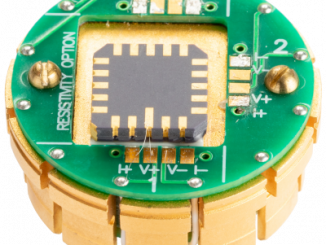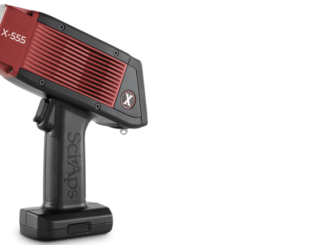
Crocus Technology, a developer of disruptive tunnel magneto-resistance (TMR) sensors, has secured $35M in funding through a combination of debt and equity from internal investors and external sources. The funding will enable Crocus to accelerate its revenue growth by expanding its operations and go-to-market resources and by investing in the continuous development of innovative TMR products, expanding its patent portfolio.

“This final round will help position Crocus to better support its rapidly growing magnetic sensor business,” said Michel Desbard, CEO, when the financing was announced in April. “In the past year, our team has made significant progress on all fronts of the business and is ready to accelerate revenue growth and reach profitability by the end of this year.”
The companys proprietary Magnetic Logic Unit (MLU) technology enables its TMR sensor products to have high magnetic sensitivity with minimal variation over a wide temperature range, coupled with ultra-low power consumption. This makes them ideal sensing solutions for IoT, mobile, automotive, medical and industrial applications, the company said. Its sensor products are embedded within a CMOS process providing a monolithic cost-effective solution designed for reliability and ruggedness.
The accompanying image from Crocus helps illustrate its core technology, says the company. When a magnetic field aligns with direction of the fixed layer, resistance is low. Resistance increases when applied field deviates from fixed layer direction. This change in resistance is the principle behind MLUs high performance sensor technology.
The worldwide market for magnetic sensors is expected to grow at 8.77% CAGR from 2017 to 2023, with revenues expected to reach $5.37 billion USD in 2023. The magnetic sensor market is continuing to experience growth in all segments with automotive, industrial, medical and consumer applications leading the way, said Sachin Garg, Senior Analyst, MarketsandMarkets. TMR sensors are slated to grow at a 9.41% compound annual growth rate over the next 5 years as their performance advantages offer greater value solution in OEMs end-products over older magnetic technologies and products.
Headquartered in Santa Clara, California, the company has offices in Grenoble, France and Beijing and Shenzhen, China.
According to the company, its MLU technology enables several previously unachievable breakthroughs in magnetic technology implementation, including ultra-sensitive magnetic sensors, highly robust secure embedded memory, ultra-high-temperature non-volatile memory capable of operation well above 200 C. It has been developed as a platform technology for multiple products from magnetic sensors, to memory, and security products. At its heart is a thin film magnetoresistive device, the magnetic tunnel junction. In its simplest form this consists of two magnetic layers on both sides of a thin insulating layer. One layer has a fixed magnetic moment while the other can chance freely in the presence of a magnetic field. When a magnetic field aligns with direction of the fixed layer, resistance is low. Resistance increases when applied field deviates from fixed layer direction. This change in resistance is the principle behind its high performance, the company said.
For more information, see www.crocus-technology.com.



